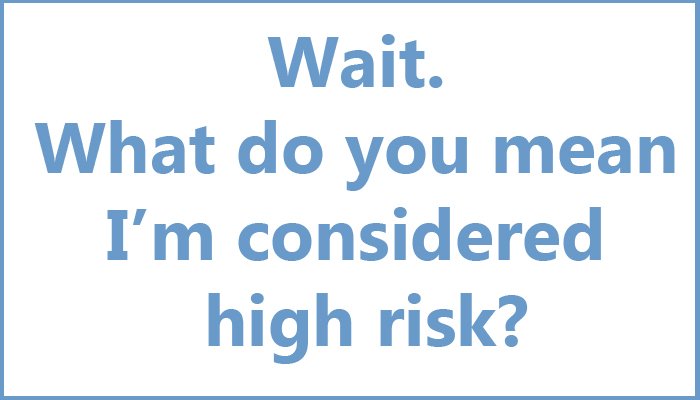By Wendy Jacques
My sales team and I hear this every day, several times a day:
“What? Why am I high risk? I just want to take credit card payments from my customers for my product or service?”
Most merchants don’t understand why banks consider them high risk. This is one of the most complex pieces of the merchant account to explain to new and existing business owners.
We at Instabill will spend much time on the phone explaining to merchants the factors that make a high risk merchant account. Let’s break some of these down so you may be able to understand the process of approval and why you are a high risk merchant in the banks eyes:
Industry Type
Banks will first and foremost look at your industry type to determine the risk of the account being approved. Certain business types are considered high risk no matter what the individual businesses history is, even with clean processing. Some of the most popular high risk merchant account industries are:
- Tech Support
- Debt Collections
- Travel
- Adult Industry
- Subscriptions with long term commitments
- Telemarketing
- Nutraceuticals
- Pharmacy
- MLM Business Opportunities
TMF/MATCH List
The TMF/Match list is a list of merchants who have had their merchant account terminated. This acts as a blacklist of terminated accounts that is shared among processors and acquiring banks. When a merchant has been placed on this list it will mean you are now a high risk merchant for the bank to approve your new merchant account.
Here are four reasons you may have been placed on this list:
- Excessive Chargebacks
- Money Laundering
- Fraud
- Breach of contract
Chargeback Risk
All banks will look at your business and assess the risk of the possible chargebacks that can happen on the merchant account. Your business type and the way you accept payments can put you in the high risk category. Here are five things that may cause your business type to receive higher-than-usual chargebacks:
1. Recurring Billing: Customer disputes the fact they agreed to a recurring billing every month.
2. Auto Shipping: Similar to recurring billing, a product ships automatically every month. The customer fails to read the fine print to which they agreed to this regular shipment.
3. No Refund Policy: if you don’t allow any refunds for your products or services, customers will most likely file a chargeback on the transaction if they are unhappy for any reason.
4. No Customer Service Phone Number: if you don’t have a customer service phone number provided on your website and the ability to respond quickly to a customer, you will experience more chargebacks. Banks require this information to be easily found on your website to prevent these chargebacks.
5. Truth In Advertising – Banks scrutinize what you claim your products or services will do for the customer. Based on your claims, they may feel you are promising more than you can deliver and this will cause a much higher instance of chargebacks. Be careful with your claims.
Card Not Present Transactions
CNP transactions will make your business a high risk account. Most businesses today are e-commerce and mail order/telephone order businesses which means the card will not be there for you to swipe. Banks will consider you a higher risk account and here are four reasons for this:
1. Fraud/Stolen Credit Cards: It is difficult to catch these transactions before they happen if the card is not reported as lost or stolen.
2. No Verification Software: In today’s world, this is becoming more and more important. If you don’t use things like Verify by Visa, MasterCard Secure Code and only doing non-3D secure transactions, you are more likely to receive fraudulent transactions and to be targeted by hackers looking for websites not currently setup to accept 3D Secure Transactions.
3. Shipping Policies: You should never allow a full capture of funds on a transaction before you ship your products or complete your service for customers. Post full shipping policies prominently on your website for the bank to review.
4. Transaction Descriptor Choice: This should not be taken lightly. What you choose to have shown on your customer’s bill as a descriptor can make the difference on how the account will be viewed by the bank. Will your customers understand what this transaction is on their bill, who you are what they purchased?
So Now What?
What can be done now that I’m classified as high risk? There are high risk merchant account providers out there, and we at Instabill have been working with high risk businesses since 2001. We understand all the special needs to get your high risk merchant account approved and we work with banks all over the world that offer approvals for high risk businesses.
Wendy Jacques is the Sales Manager at Instabill. She can be reached at [email protected].


